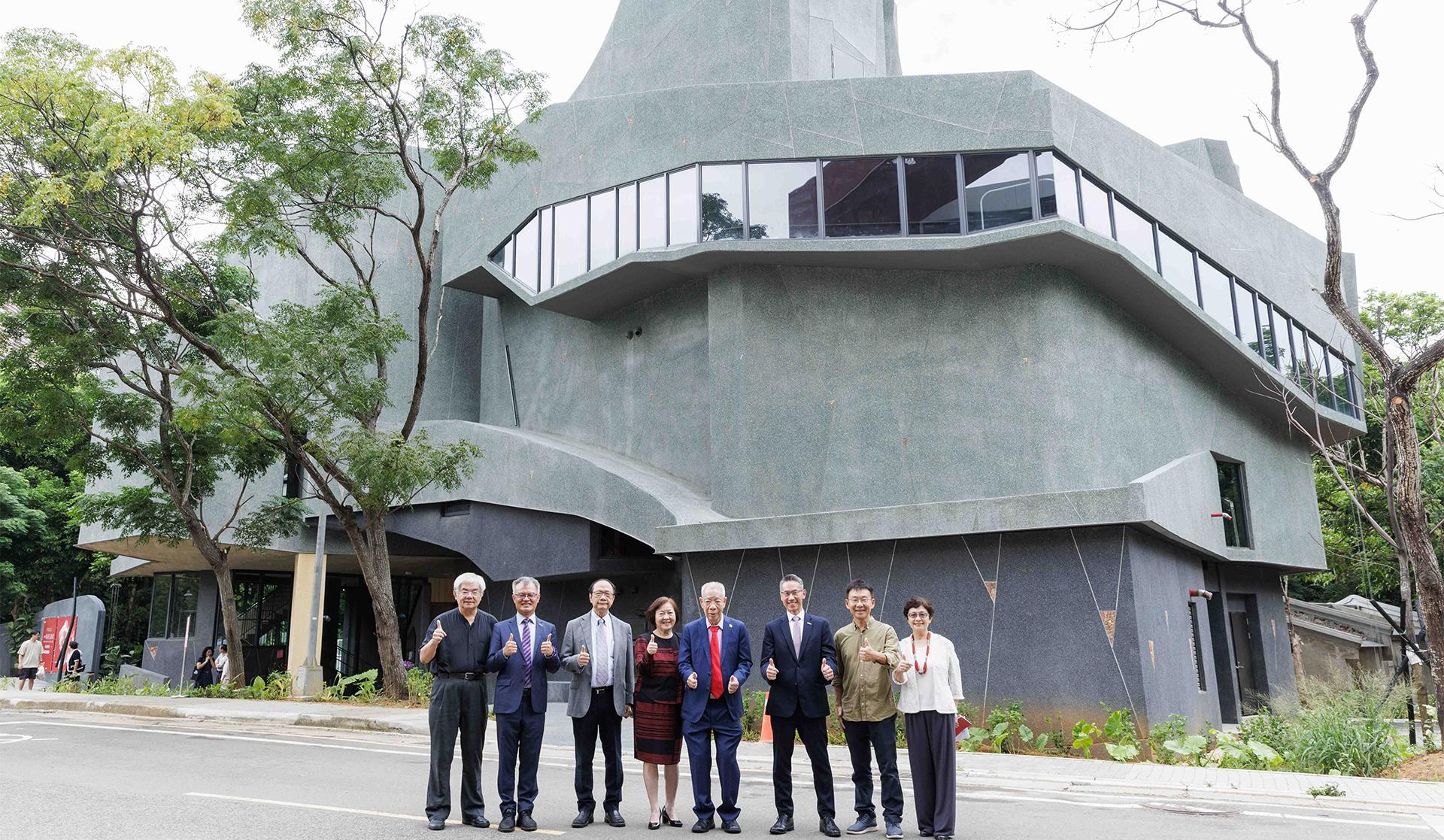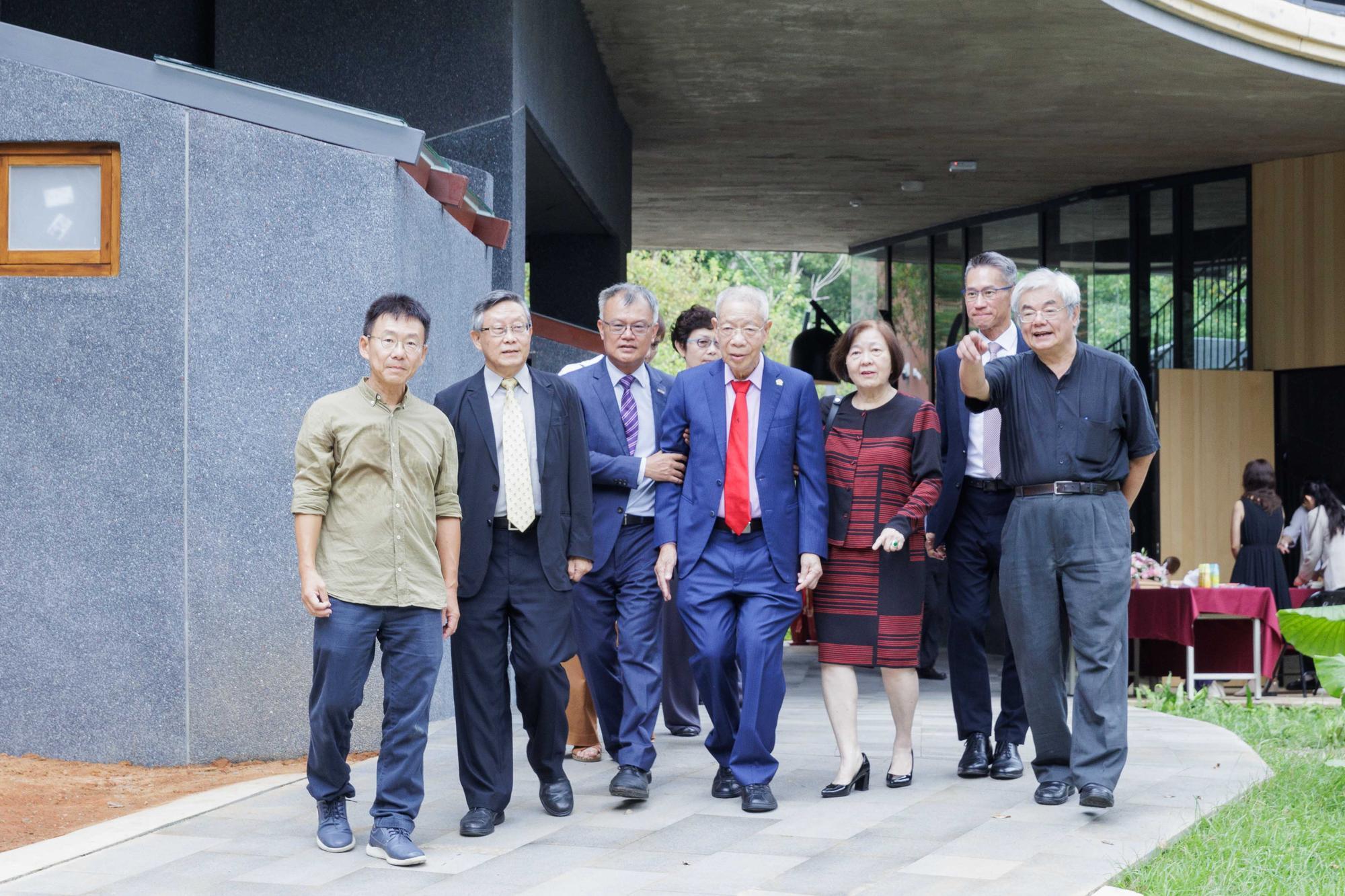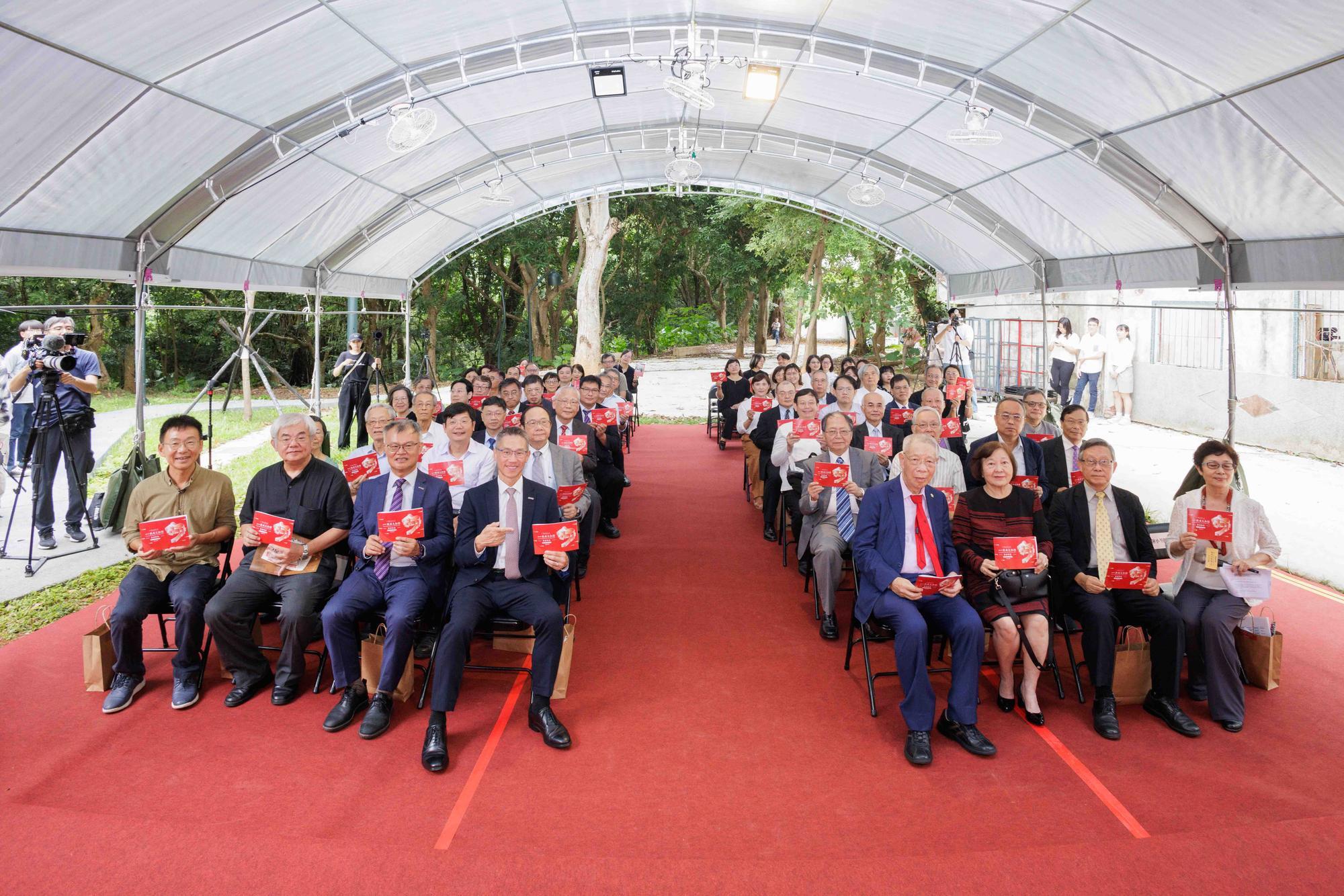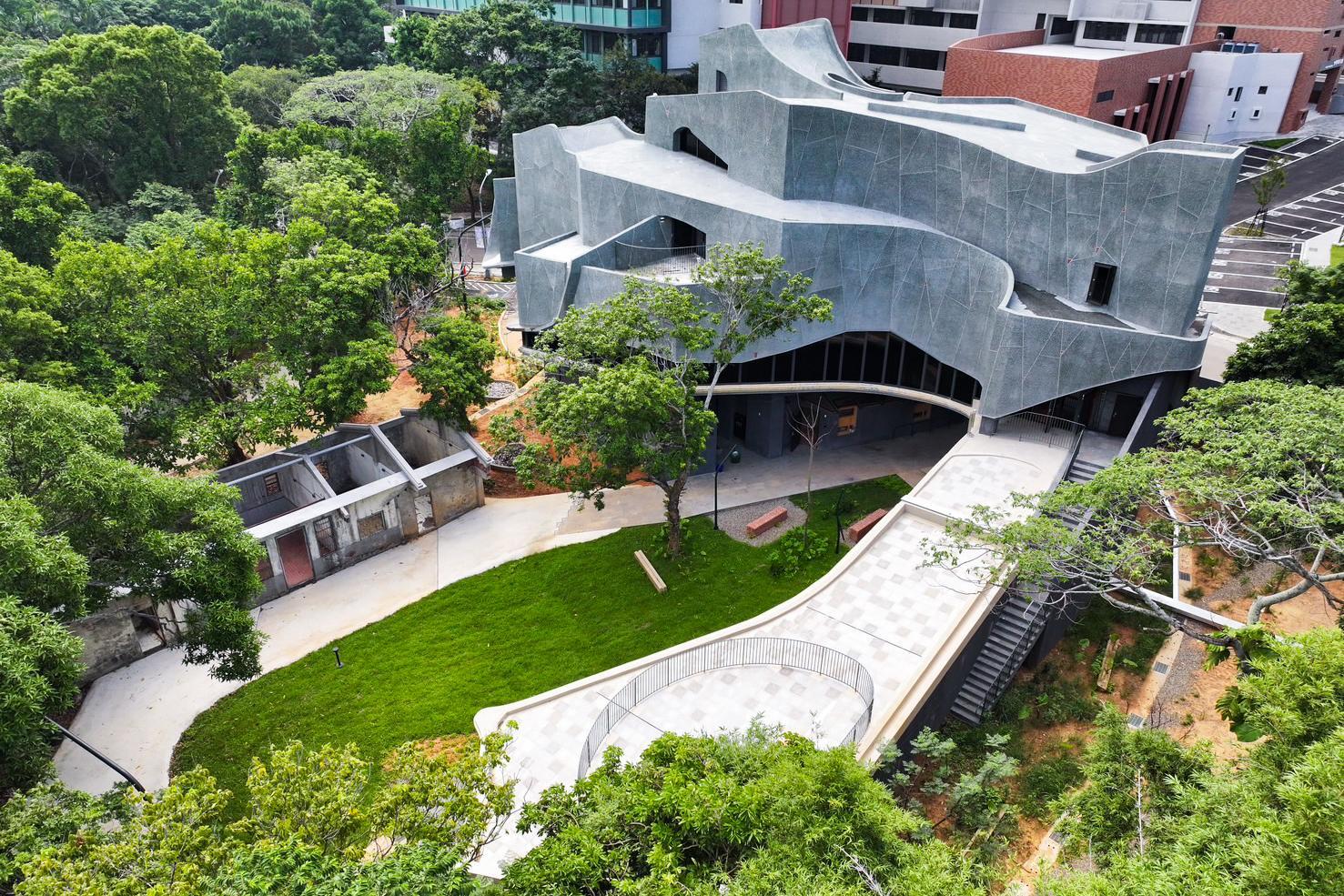2024.10.07

In front of the Jie Ying Hall (left to right): Yang (楊儒賓), NTHU senior vice president Chen-Fu Chien (簡禎富), former NTHU president Wen-Tsuen Chen (陳文村), Chen Han (陳韓), Tseng (曾繁城), Kao (高為元), Huang (黃聲遠), and Hsieh (謝小芩).
After three years of planning and construction, the Jie Ying Hall at National Tsing Hua University (NTHU) in Taiwan has recently been completed. The building was constructed with funds donated by F.C. Tseng (曾繁城), chairman of the Taiwan Semiconductor Manufacturing Company (TSMC) Foundation, and was designed by noted architect Sheng-Yuan Huang (黃聲遠) of Fieldoffice Architects. The collection consists of nearly four thousand items relating to modern East Asia, all of which were donated by Professor Rur-Bin Yang (楊儒賓) of the Graduate Institute of Philosophy and his wife. This is the first international-level cultural relics hall in Hsinchu.
Chairman Tseng named the cultural relics museum the Jie Ying Hall in memory of his parents. The new building is a fine example of green architecture, and at the opening ceremony Huang gave a guided tour of the building to Yang, Professor Sheng-Ping Fang (方聖平), Tseng, and his wife, Chen Han (陳韓).
NTHU president W. John Kao (高為元) said that history and cultural relics inspire people to think about the meaning of life. He brought up the famous line from the Buddhist scriptures quoted by Yang in one of his papers---"A world in a single flower, the Tathagata in a single leaf”---to explain that every cultural relic has rich historical significance. He thanked the TSMC Foundation for its support and the Yangs for their donation, saying that he envisions the museum as a starting point for self-exploration.
Tseng came to Taiwan with his parents in 1950 after traveling from Guizhou province to Hainan Island soon after mainland China fell to the Communists. “I was just three years old at the time, and we got on the last boat to Taiwan,” explained Tseng, adding that if not for their narrow escape, he could have never gone on to work at TSMC, let alone the TSMC Foundation.
Tseng said that he has always liked reading books, especially the works of Qichao Liang (梁啟超) and Guowei Wang (王國維), two of the “four luminaries of Chinese studies.” As Tseng sees it, “By studying history, we come to understand where we came from, what our purpose is, and how we can make a positive contribution to society.”
The collection currently consists of nearly 4,000 valuable items dating from the Ming and Qing dynasties, all acquired by Professor Yang during his 30 years of teaching at NTHU. Several special exhibitions have already been planned, and the Hall is expected to acquire an additional 2,000 items in the future.
“Each of these cultural relics has a story to tell,” explained Yang, pointing out that many of them were displaced during the chaos of war before eventually finding their way into his collection. For Yang, the value of such relics is that they present history more objectively, making it possible to discuss controversial topics in a less contentious way, thereby opening the door to a new level of discourse wherein entrenched ideological stances can be transcended. In this way, “Even though a particular item may have been the product of war and conflict, it still has the potential to bring about a positive outcome!”
The curator of the Hall is Hsiao-Chin Hsieh (謝小芩), who said that each item in the collection contributes to our understanding of the modern development of East Asia, the international situation in the region, and the unique history of NTHU. The opening exhibition will be held next fall on the theme of the 1911 Chinese Revolution and includes important documents which have had an impact on the history of Taiwan.
In designing the Hall, Huang strove to create a venue conducive to presenting multiple historical perspectives while seamlessly blending into the natural surroundings. The site of the new Hall has long been occupied by an old three-section farmhouse, the main section of which has been preserved, together with many of the adjacent fruit trees, and the new building mirrors the U-shape of the old farmhouse. One of the highlights of the unique architectural design is its arrangement of intersecting spaces of various widths and heights, lending a sense of natural flow.
In order to best protect the cultural relics, the storage area is located at the center of the building and it is surrounded by double-layer walls. The Hall is also equipped with a pest control room, research rooms, and multiple windows designed to keep visitors connected with the surrounding environment.

Inside the newly completed Jie Ying Hall (left to right): Hsieh (謝小芩), former NTHU president Hong Hocheng (賀陳弘), Chen Han (陳韓), Tseng (曾繁城), Kao (高為元), Chien (簡禎富), Yang (楊儒賓), and Huang (黃聲遠).

On a tour of the newly completed Jie Ying Hall (left to right): Huang (黃聲遠), Hocheng (賀陳弘), Chien (簡禎富), Tseng (曾繁城), Chen (陳韓), Kao (高為元), and Yang (楊儒賓).

NTHU president W. John Kao (高為元) said that history and cultural relics are the starting point for dialogue and self-exploration.

Tseng (曾繁城) said that studying history helps us to understand where we came from, what our purpose is, and how we can make a positive contribution to society.

Professor Yang (楊儒賓) of NTHU's Graduate Institute of Philosophy has donated nearly four thousand items relating to modern East Asia.

In designing the Hall, Huang (黃聲遠) strove to create a venue conducive to presenting multiple historical perspectives while seamlessly blending into the natural surroundings.

Curator Hsiao-Chin Hsieh (謝小芩), is currently preparing the opening exhibition to be held next fall.

At the opening ceremony for the Jie Ying Hall.

The newly completed Jie Ying Hall.

The new building mirrors the U-shape of the old farmhouse that has long occupied site, the main section of which has been preserved.

The Jie Ying Hall seamlessly blends into the natural surroundings and its intersecting spaces of various widths and heights lend a sense of natural flow.












